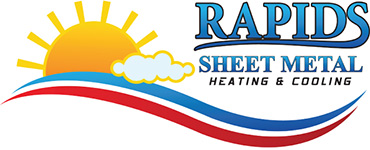
You shouldn’t have to sacrifice comfort or drain your wallet to keep your home at a refreshing temperature during muggy weather.
But what is the ideal temperature, exactly? We go over recommendations from energy professionals so you can select the best setting for your residence.
Here’s what we advise for the most energy-efficient setting for air conditioning in Wisconsin Rapids.
Recommended Thermostat Settings for Summer
Most families find setting the thermostat at 72-73 degrees is ideal. However, if there’s a big difference between your interior and outside temperatures, your AC costs will be larger.
This is our advice based on the U.S. Department of Energy (DOE) and ENERGY STAR®.
While at home: 78 degrees. While that appears too high, there are ways you can keep your house refreshing without having the AC running frequently.
Keeping windows and curtains shut during the day keeps chilled air where it belongs—inside. Some window treatments, such as honeycomb shades or plantation shutters, are designed to provide extra insulation and improved energy efficiency.
If you have ceiling fans in your house, the DOE says you can increase thermostat temps about 4 degrees higher without compromising comfort. That’s since they freshen through a windchill effect. As they cool people, not areas, shut them off when you leave a room.
If 78 degrees still appears too uncomfortable initially, try conducting a test for about a week. Begin by increasing your thermostat to 78 degrees while you’re at your house. Then, steadily turn it down while using the tips above. You might be surprised at how refreshed you feel at a higher temperature setting.
While away: 88 degrees. There’s no rationale for keeping the air conditioner going all day while your home is empty. Switching the temp 7–10 degrees warmer can save you as much as 5–15% on your electrical costs, according to the DOE.
When you get home, don’t be tempted to set your thermostat under 78 to cool your residence faster. This isn’t useful and typically results in a bigger air conditioner bill.
A programmable thermostat is a good way to keep your temperature under control, but you have to set programs. If you don’t utilize programs, you risk forgetting to raise the set temperature when you take off.
If you need a handy resolution, think over getting a smart thermostat. This thermostat works with with your phone, so it is aware when you’re at your house and when you’re out. Then it intuitively changes temperature settings for maximum savings. How much exactly? Usually $180 each year on heating and cooling, according to ENERGY STAR.
Another perk of installing a smart thermostat? You can use your phone to keep an eye on and adjust temperature settings from just about anywhere.
While sleeping: Around 70 degrees. While ENERGY STAR advises 82 degrees, that may be unbearable for the majority of families. Many people sleep better when their sleeping space is chilly, so that’s why the National Sleep Foundation advises 60–67 degrees. But that may be too chilly, due to your pajama and blanket preference.
We advise using a comparable test over a week, setting your temp higher and progressively lowering it to pinpoint the right setting for your house. On cool nights, you may discover keeping windows open at night and using a ceiling fan is a preferable idea than running the AC.
More Approaches to Use Less Energy This Summer
There are added methods you can spend less money on cooling bills throughout the summer.
- Install an energy-efficient AC system. Central air conditioners only are effective for about 12–15 years and become less efficient as they get older. An updated air conditioner can keep your house cooler while keeping AC costs down.
- Set regular air conditioner service. Routine air conditioner maintenance keeps your system operating like it should and could help it operate at better efficiency. It might also help extend its life cycle, since it enables techs to uncover small issues before they create a major meltdown.
- Switch air filters often. Read manufacturer instructions for changing your air filter. A dusty filter can cause your system to short cycle, or turn on and off too often, and increase your energy.
- Check attic insulation levels. Just about 90% of residences in the United States don’t have adequate insulation, according to the Insulation Institute. Most southern climates require 13–14” of attic insulation, while northern climates require 16–18”.
- Have your ductwork checked. Ductwork that has loosened over time can seep conditioned air into your attic, walls or crawl space. This can lead to huge comfort troubles in your residence, like hot and cold spots.
- Seal cracks, doors and windows. Keep humid air in its place by closing holes. You can also caulk or weather strip doors to seal more cool air within your home.
Conserve More Energy During Warm Weather with Rapids Sheet Metal Works Inc
If you need to use less energy this summer, our Rapids Sheet Metal Works Inc specialists can provide assistance. Get in touch with us at 715-564-8958 or contact us online for extra info about our energy-saving cooling products.
